E-Sports
How mobile gaming connects advertisers to household shoppers
Game developers, martech platforms, and agencies are increasingly trying to convince advertisers that consumers playing mobile games are worth reaching. Stakeholders, like gaming company Zynga, are positioning ad placements as an opportunity to reach high-value shoppers that turn to ecommerce for a range of household purchases. “As data centric as the advertising industry is, the […]
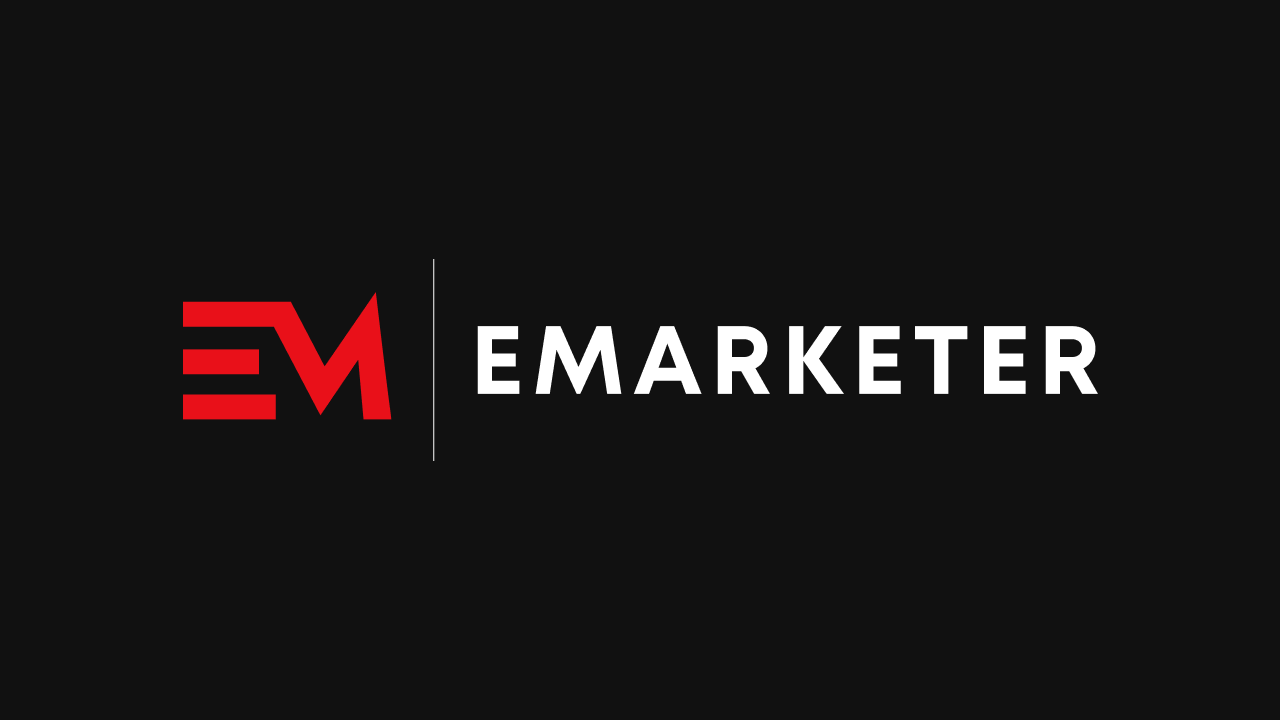
Game developers, martech platforms, and agencies are increasingly trying to convince advertisers that consumers playing mobile games are worth reaching.
Stakeholders, like gaming company Zynga, are positioning ad placements as an opportunity to reach high-value shoppers that turn to ecommerce for a range of household purchases.
“As data centric as the advertising industry is, the people pushing the economy forward and buying the most products are not the ones they’re targeting,” said Gabrielle Heyman, VP global brand sales and partnerships at Zynga.
While the perception is that mobile gaming advertising is a closed ecosystem that promotes other mobile games, there’s a growing moment to push external brand involvement by emphasizing the purchasing power of its audience and the potential for seamless partnerships.
The hidden opportunity
Mobile gaming’s enormous audience has long been a foregone conclusion, but it is a channel in need of robust targeting and measurement. Jorge Prado, co-founder and CEO at mobile game marketing platform Admazing is one of many entrepreneurs preaching that contemporary martech ensures that advertisers’ dollars will be well spent.
“Since the beginning, Admazing has always developed their technology only to look for the right user at the right time, in the right device, regardless of the game,” said Prado at this month’s PlayFronts. “Technology is becoming more and more available to help us drive those impactful impressions, combined with adding new technologies to measure that.”
Partnerships are rapidly emerging. Stephanie Brownlee, director of media activation at OMD USA, recently connected PepsiCo with Admazing for a successful Gatorade mobile game campaign.
“We understand that attention spans are low… the entire media space is really struggling,” said Brownlee at PlayFronts, touting the results they saw leveraging formats like rewarded video. “For someone that is playing a mobile game and is looking to have an extra life, we’re able to essentially build that brand connection in a more personal way.”
While the mobile gaming space is supported by endemic advertising, this dynamic is shifting as gaming publishers roll out more native brand integrations, said Heyman.
“I don’t foresee a time when 100% of the ads in mobile games are brands, but I think it could get to a 50/50 threshold,” said Heyman.
A valuable demographic
Despite the assumption that the gaming industry skews young, Zynga is confident that mobile gaming is fueled by millennial and Gen X women.
- Women make up 47% of US gamers, EMARKETER forecasts, and 69% of women prefer simple mobile games, according to Deloitte’s 2024 media trends survey.
- 41% of mobile gamers are parents, 90% are the primary grocery shoppers in their households, and 88% are the primary retail shoppers, according to a Zynga study.
“Now that I’m in my 50s, I’m probably at the height of my shopping moment, and mobile games are one of the top activities for people my age,” said Heyman. “At the same time, there’s this obsession with youth.”
While marketers often focus on Gen Z to target lifetime shoppers at a young age, this generation lags in brand loyalty—these shoppers are 33.9% more likely to have abandoned at least one brand or business over 12 months, according to a Capital One Shopping survey.
“The majority of RFPs that come in are for Gen Z,” said Marian Thomas, director of partnerships, research and measurement at Zynga. “People forget about you when you’re old, but (older generations) have a lot of money, and advertisers can reach them in unique and creative ways on mobile as well.”
Mobile gamers are also more likely than non-mobile gamers to shop via a mobile app vs. online website, emphasizing an opportunity for in-app experiences that drive results, said Thomas.
“People are always talking about retail media, but no one is talking about this retail media consumer that is comfortable doing things in-app,” she said.
Exchanging ad interruptions for free content
Advertising within mobile games can give brands repetitive exposure to consumers. While gaming apps might have a harder time capturing audience attention than functionality apps like food and drink, they are more likely to maintain audience attention, according to an Aarki report.
- Less than 5% of free game players make in-app purchases, per Z2A Digital, and two-thirds (66%) of US TV viewers now prefer ad-supported streaming over ad-free alternatives, per Hub Research data.
While Zynga looks for brand integrations that are as seamless as possible, consumers have proven their interest in watching ads in exchange for free content.
“Ads are part of the mix when you have a free entertainment experience,” said Heyman. “Consumers like keeping money in their pocketbooks and they see the value exchange. I think we’re giving the same optionality that any streamer is offering right now.”
For Brownlee, the common perception that a brand’s audience is not in the mobile gaming space needs to be debunked.
“There is always someone,” she said. “There are so many users there. It’s understanding the data and going through your consumer trends to understand where that user is so you can deliver the right brand messaging to the right person at the right time.”
This was originally featured in the EMARKETER Daily newsletter. For more marketing insights, statistics, and trends, subscribe here.
E-Sports
How F1 Drivers and Teams License for Slot Machine Entertainment
Noisy, fast, and recognizable, Formula 1 racing tends to evoke images of high-octane drama on circuits around the globe, but behind the noise and even behind the chaos of a tire-slicked pit lane, something calm is quietly shaping strategies. It’s how F1 teams and drivers license their prestigious brands in industries that might not seem […]



Noisy, fast, and recognizable, Formula 1 racing tends to evoke images of high-octane drama on circuits around the globe, but behind the noise and even behind the chaos of a tire-slicked pit lane, something calm is quietly shaping strategies.
It’s how F1 teams and drivers license their prestigious brands in industries that might not seem like an obvious fit at first glance. Where Racing Meets Reels. At the outset, Formula 1 and slot machines appear worlds apart: one relies on elite engineering, while the other is all down to chance.
However, over recent years, these worlds have been intersecting at strategic branding partnerships, and now they create unique opportunities for both industries to tap into new audiences.
Titles like sweet bonanza may not share the sleek mechanics of an F1 car, but their popularity highlights how gaming themes can complement the thrill and spectacle of motorsport in unexpected ways.
For example, consider the 2023 F1 Heineken “Silver Las Vegas Grand Prix,” where Aristocrat Gaming, an Australian slot manufacturer, secured a multi-year sponsorship as the official slot partner of the event.
What is also interesting is that despite this tie-up, even now, Aristocrat has not brought out F1-branded slot machines; its focus is more introspective toward event activation and casino collaborations, as with MGM Resorts and Caesars Entertainment.
A Carefully Controlled Brand Game
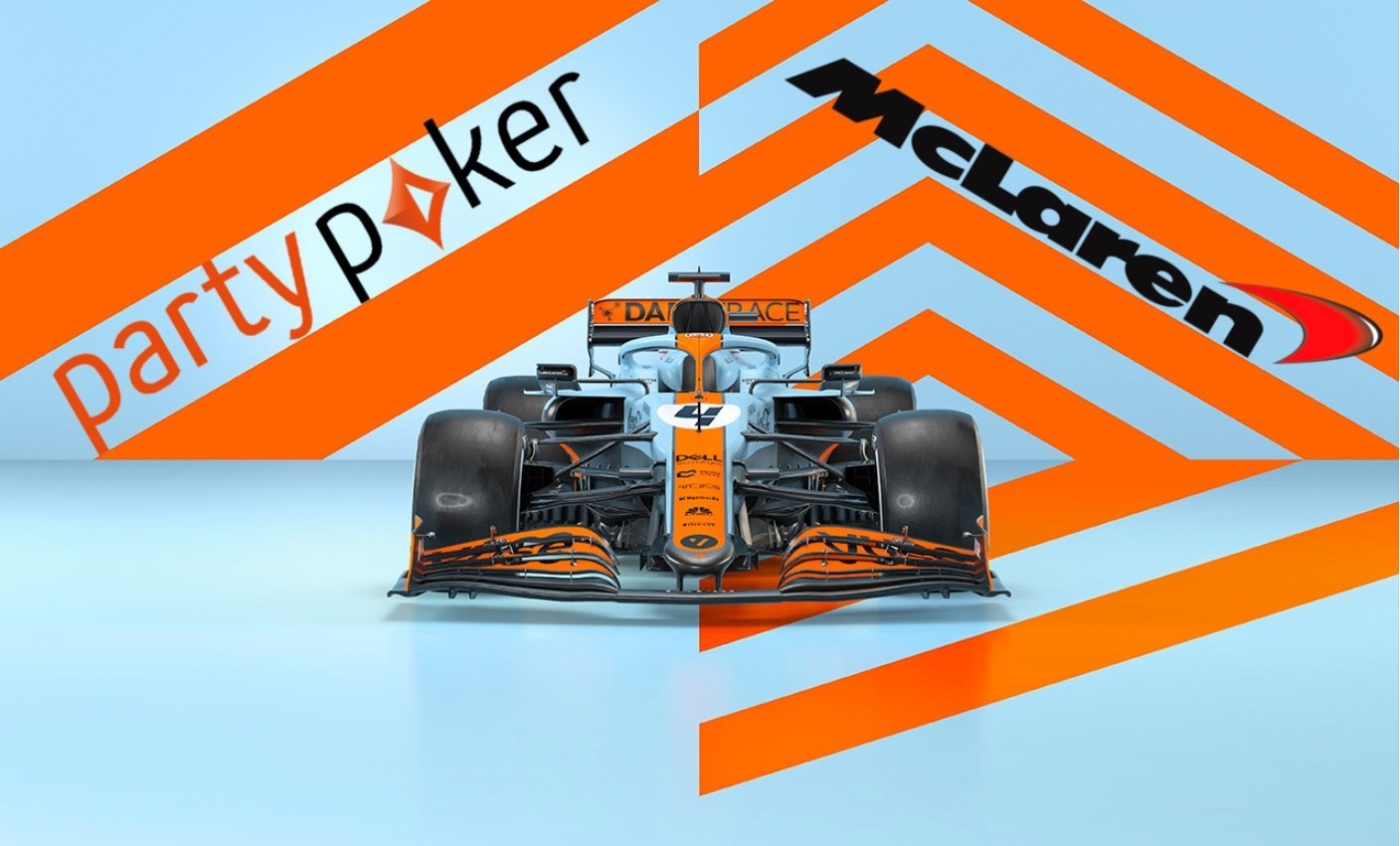

These licenses do not translate to numbers but to perception. The word “fishin frenzy” might not bring to mind the excitement of other leading slot titles, but it is proof of how particular the sector is in regard to product identity with the game. F1 wants accuracy rather than expansiveness; it is leaning toward elegance and speed as opposed to losing focus on various brand offerings.
Formula 1 licensing extends beyond singular events or themed games, focusing on broader strategy. F1 is not just cautious; it’s intentional. Brand licensing for games in such a gambling world is tough to do. F1 adores a refined identity of excellence, discipline, and global acclaim. That’s why there was just one F1 officially branded slot machine, and that, too, related directly to the Vegas race experience.
Some teams, however, approach branding partnerships differently. There are a few twists out there, such as that adopted by teams such as McLaren. Through an affiliation with joint partners, for instance, Entain McLaren lets their brand be visible within certain online casino platforms through PartyCasino and PartyPoker. However, it is often more of an experiential setup, custom fan experiences, and exclusive digital content than actual slot production.
After online platforms, brick-and-mortar casinos are perhaps the most popular targets for F1 to partner with with respect to the gaming industry. Another key industry with which the connection between F1 and the gaming sector is drawn is brick-and-mortar casinos. They love their casino sponsorships.
Casino Connection and Fan Experience at high-roller Grand Prix weekends


Of course, it’s not just about having logos painted on race cars as a form of contextual artistic expression; this is one way of creating a multi-layered fan experience. From high-roller events during Grand Prix weekends to social media, teams create content-driven partnerships. Some of these raise eyebrows, but the funding benefit for teams is undeniable; more funding means better development, enhanced tech, and, ultimately, better performance on the track.
Still, not all partnerships unfold smoothly. Teams and their partners must tread gingerly through various markets, each with its own regulatory environment. For example, during the Dutch Grand Prix, Stake, a major casino sponsor, had to retract its branding from Sauber due to local licensing issues. It’s a clear reminder that these collaborations have to keep adapting to shifting legal and cultural expectations
Formula 1 licensing is complex, especially in the gaming and gambling industry. It might seem attractive to flood the market with branded slot machines rather than pursue selective high-value partnerships that align with the vision as well as the values of F1 and its teams. It is, hence, not much about the spin of the reels but what message it carries.
But the most important innovation is to preserve the very balance that makes Formula 1 truly a special case in the world, one in which fun and glamour can be combined, provided it’s done sensibly. No matter where one is in the paddock or on the casino floor, Formula 1 is unmistakable: fast, bold, never random.
E-Sports
Fortnum & Mason, Ladbrokes, Beats, Bulldog and Huntsman: Top 5 performance marketing campaigns
To continue enjoying this article, please sign in. You can register for free for limited further access. Register Limited free articles a month Free email bulletins Register now Take a 30-day free trial Get full access to all our subscriber-only content […]

To continue enjoying this article, please sign in. You can register for free for limited further access.
E-Sports
From Vision to Victory: How David Natroshvili Transformed SPRIBE Into a Global Gaming Powerhouse The Hype Magazine: Unveiling the Pulse of Urban Culture – From Hip Hop to Hollywood! Explore a Diverse Tapestry of Stories, Interviews, and Impactful Editorials Spanning Fashion, Gaming, Movies, MMA, EDM, Rock, and Beyond! www.thehypemagazine.com – The Hype Magazine The Hype Magazine
The iGaming industry has witnessed numerous attempts at innovation, but few have achieved the transformative impact that David Natroshvili has accomplished with SPRIBE. Since founding the company in 2018, Natroshvili has demonstrated that success in technology requires more than just innovative products—it demands visionary leadership, strategic execution, and an unwavering commitment to understanding player needs. […]
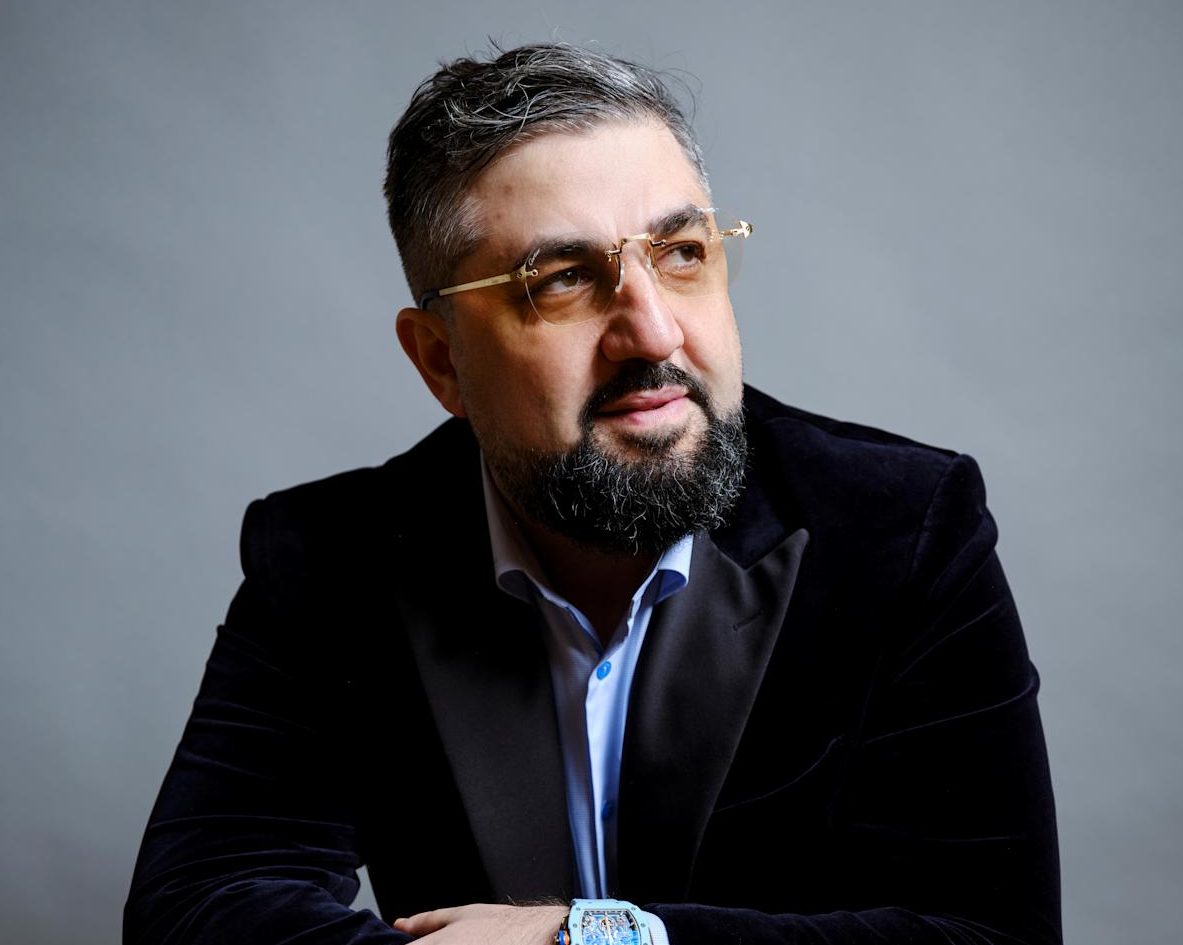
The iGaming industry has witnessed numerous attempts at innovation, but few have achieved the transformative impact that David Natroshvili has accomplished with SPRIBE. Since founding the company in 2018, Natroshvili has demonstrated that success in technology requires more than just innovative products—it demands visionary leadership, strategic execution, and an unwavering commitment to understanding player needs.
The Foundation of Innovation
When Natroshvili established SPRIBE in 2018, he wasn’t merely launching another gaming startup. With 25 years of entrepreneurial experience and an MBA from Kutztown University of Pennsylvania, he brought a unique perspective shaped by diverse professional experiences spanning government roles in Georgia and Fortune 500 company operations in the United States. This multifaceted background provided him with insights into consumer engagement and market dynamics that would prove instrumental in SPRIBE’s development.
“I felt that traditional gaming had become stale,” Natroshvili explained. “Players, especially younger ones, were looking for something more interactive and engaging than the standard offerings.” This observation would become the cornerstone of SPRIBE’s approach to game development, leading to the creation of Aviator, a game that has fundamentally altered industry expectations.
The company officially launched in 2018 with a small team based in Tbilisi, Georgia. One year later, SPRIBE unveiled Aviator, which has since become the leader in the crash game genre. The game’s premise—players watch a virtual plane ascend while deciding when to cash out before it disappears—represents a departure from traditional slot mechanics toward skill-based, community-driven experiences.
Strategic Vision and Market Understanding
Natroshvili’s leadership philosophy centers on three core principles: innovation, adaptability, and strategic execution. This approach has guided SPRIBE through significant growth phases, expanding from its initial Georgian headquarters to maintaining offices across multiple locations, including Kyiv, Tallinn, Warsaw, Tbilisi, and the Isle of Man, with over 270 team members driving innovation.
“In this industry, standing still means falling behind,” Natroshvili noted. “I believe in empowering our team to push boundaries and take calculated risks. But innovation alone isn’t enough—you need to execute with precision.” This philosophy has influenced every aspect of SPRIBE’s operations, from game development to market expansion strategies.
The CEO’s player-first mentality distinguishes SPRIBE from competitors who primarily focus on operator requests. “We design for players first and foremost,” Natroshvili emphasized. “When players love a game, operators benefit naturally. It’s about finding that perfect balance where everyone wins.” This approach has contributed to Aviator’s remarkable success, with the game now boasting over 42 million monthly active users and facilitating more than $14 billion in monthly wagers as of December 2024.
Building Global Partnerships
Recognizing that SPRIBE’s demographic significantly overlapped with sports entertainment audiences, Natroshvili orchestrated partnerships with global sports brands. The recent multiyear agreements with UFC and WWE represent strategic moves that extend beyond traditional gaming industry collaborations. Under these agreements, Aviator branding will appear prominently on UFC’s Octagon canvas at every event worldwide, while WWE will showcase the brand at select marquee events.
“Our partnerships align with our company identity,” Natroshvili explained. “We look for collaborations that reflect our innovative, dynamic approach while helping us reach new audiences.” These partnerships demonstrate his understanding that modern gaming companies must think beyond traditional marketing channels to achieve global recognition.
Nicholas Smith, Vice President of Global Partnerships for TKO, highlighted the strategic alignment: “Much like UFC and WWE, Aviator is a pioneer in its own industry, reshaping the iGaming landscape with innovative, immersive, and engaging consumer experiences. Together, UFC and WWE provide brands with access to one of the most formidable marketing portfolios in sports.”
Navigating Industry Challenges
SPRIBE’s journey from startup to global leader wasn’t without obstacles. Natroshvili faced significant resistance when introducing the company’s innovative approach to traditional operators. “Initially, many operators were hesitant to adopt something so different,” he recalled. “The industry tends to favor established formats, and we were asking them to take a chance on something completely new.”
To overcome this resistance, Natroshvili armed his team with comprehensive data and encouraged trial opportunities that would demonstrate Aviator’s engagement potential. His persistence proved successful when early adopters began reporting remarkable results, leading to broader industry acceptance.
This experience shaped Natroshvili’s approach to innovation and market education. Rather than simply developing products and expecting market adoption, he emphasized the importance of demonstrating value through measurable results and building relationships based on mutual success. Industry publications have recognized how this strategic methodology has become a template for successful gaming industry disruption.
Technology Leadership and Future Vision
Under Natroshvili’s guidance, SPRIBE has invested heavily in research and development, exploring emerging technologies like artificial intelligence and blockchain to enhance gaming experiences. The company’s commitment to technological advancement is evident in Aviator’s provably fair algorithm, which allows players to verify game outcomes and ensures transparency.
“We wanted to design a game that challenged players to think and make decisions in real time, a thrilling gaming experience they can experience as part of a collective,” Natroshvili said. “By incorporating social and multiplayer elements, we’ve built something that brings players together while allowing them to compete against each other’s skills.”
This focus on community-driven gaming has positioned SPRIBE at the forefront of industry trends toward social interaction and skill-based mechanics. The company’s emphasis on mobile-first design has proven particularly successful in emerging markets, where smartphone adoption drives gaming engagement. Recent industry analysis has highlighted how the gaming entrepreneur’s vision has fundamentally reshaped player expectations across global markets.
Measuring Success Beyond Numbers
For Natroshvili, success extends beyond SPRIBE’s impressive growth metrics. While the company’s achievements—including Aviator’s position as the world’s leading crash game by market share, with over 350,000 bets per minute and partnerships with 4,500 active clients worldwide—demonstrate market validation, he emphasizes the broader impact on industry transformation.
“Transformation isn’t just about having a good idea—it’s about execution and persistence,” Natroshvili reflected. “What drives me is knowing that we’re creating something that genuinely changes how people experience gaming.” This perspective reflects his commitment to long-term industry evolution rather than short-term financial gains.
The company’s expansion into markets across Asia Pacific, Africa, Europe, and the Americas demonstrates the universal appeal of Natroshvili’s gaming philosophy. In 2024, Asia Pacific achieved a remarkable 629.67% year-over-year increase in Monthly Active Users, while Africa contributed 19.81% of new player inflow, highlighting the global resonance of SPRIBE’s approach. Financial media outlets have documented how SPRIBE’s CEO has successfully navigated diverse regulatory environments while maintaining consistent growth metrics.
Industry Recognition and Future Outlook
Natroshvili’s leadership has garnered recognition throughout the iGaming industry, with SPRIBE receiving acknowledgment for its innovative approach to game development and player engagement. The company’s partnerships with industry leaders such as Monster Energy and PRIME Hydration, alongside the recent UFC and WWE agreements, demonstrate the broader entertainment industry’s recognition of SPRIBE’s market position. Business leaders have noted how the company’s founder exemplifies integrity-driven leadership in the technology sector.
“This partnership isn’t about immediate ROI; it’s about long-term positioning,” Natroshvili said regarding the sports entertainment collaborations. “We want to further cement our leadership as a top software developer, as well as an entertainment-tech market leader capable of holding its own alongside global powerhouses like UFC and WWE.”
As SPRIBE continues expanding its global presence, Natroshvili’s focus remains on innovation and player satisfaction. His leadership has established a foundation for sustained growth while maintaining the company’s commitment to transforming gaming experiences. The success of this approach is evident in SPRIBE’s rapid expansion from a small Georgian startup to a global technology leader with operations spanning multiple continents.
The ongoing development of new gaming experiences and exploration of emerging technologies suggests that Natroshvili’s influence on the iGaming industry will continue expanding. His emphasis on community-driven, skill-based gaming has already influenced industry standards, and future innovations promise to further reshape how players engage with digital entertainment platforms.
E-Sports
Grad wins regional Emmy for voter education videos
Emily Houck holds the regional Emmys she and her brother, Dillon, won for their public service videos. (Photo by Newenglandemmy.org) Emily Houck’s 21st birthday on Saturday was a celebration to treasure. The GCU entrepreneurship graduate and her IDEEUH Media company, co-founded with brother Dillon, won an Emmy at the Boston/New England Regional Emmy Awards on […]

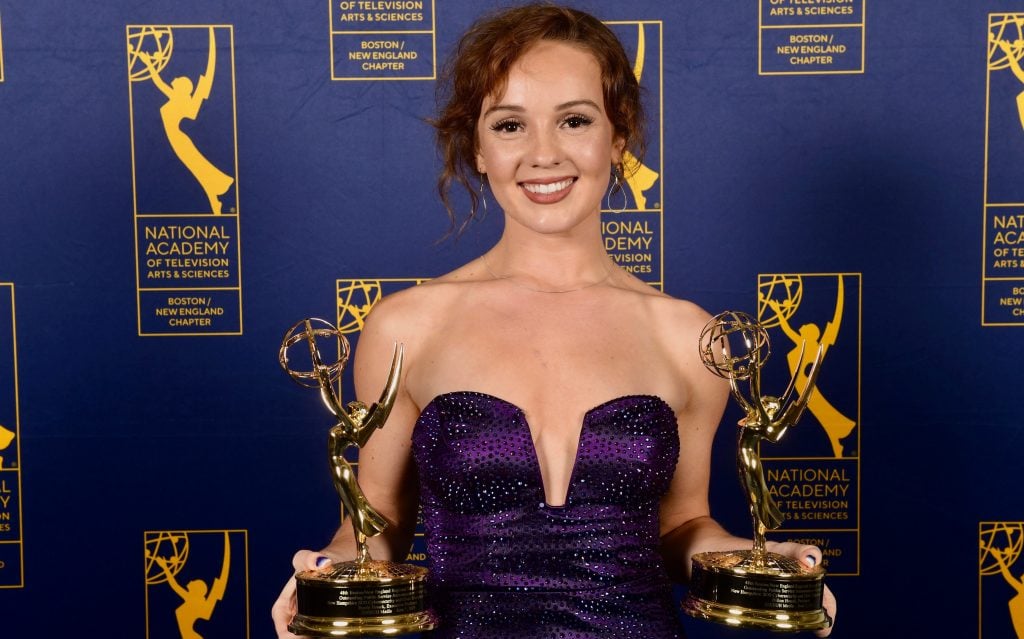
Emily Houck’s 21st birthday on Saturday was a celebration to treasure.
The GCU entrepreneurship graduate and her IDEEUH Media company, co-founded with brother Dillon, won an Emmy at the Boston/New England Regional Emmy Awards on Saturday in the public service announcement campaign category.
“It was quite the weekend,” Houck said. “I don’t think I can ever beat that.”

The Houcks, natives of Idaho, started their video company while in high school with the support of their father, Chad, former Idaho Secretary of State. They produced a series of 40 videos for Idaho’s elections designed for poll worker training and public education, such as how to register to vote, documents needed to vote, and addressing frequently asked questions.
They soon attended National Association of Secretaries of State conferences and worked with seven states to create similar public service announcements.
One of those states was New Hampshire, where they created the New Hampshire Cybersecurity and Civic Education Campaign, a series of videos designed to educate state voters about the importance of cybersecurity and civic responsibility, including how to recognize and avoid phishing attacks and misinformation generated by artificial intelligence.
The work of Emily, executive producer, and Dillon, producer, went up against submissions by well-seasoned network television reporters and anchors.
“I wasn’t necessarily anticipating winning,” Emily Houck said. “The nomination itself was an accomplishment. But the imposter syndrome was strong being in that room and seeing everyone there, seasoned professionals on their 30th awards show and seeing the other nominees as well. And then winning, I was in absolute shock.
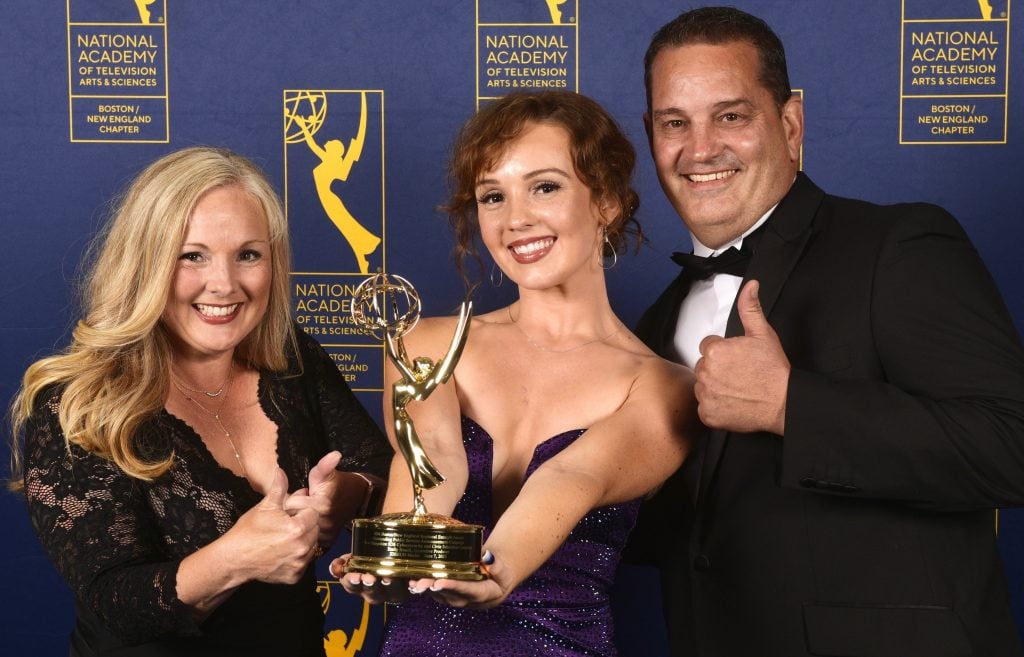
“But it was beautiful because I could see how proud my parents were, and I know they’re really the only reason we’ve gotten that far. My father is so helpful in every possible way. They sacrificed so much financially with their time to put us in this position. It made me feel good because I know I made them proud, and seeing their faces and (seeing them) sobbing was beautiful.”

A lot of event attendees had plenty of questions for the Houcks: “A lot of people asked, ‘What network are you here with?’ ” Houck said. “All the TV channels had their submissions, and we’re not with a network.
“They asked if there was a production company, and we said, ‘IDEEUH Media,’ and (they replied), ‘Oh, who owns that?’ ‘We do. Just us two produce this entire thing.’ And everybody was so confused every time we said that.”
Legendary journalist Meredith Vieira, a Rhode Island native whose 50 years in television have included hosting roles on the “The Today Show,” “The View,” “Who Wants to Be a Millionaire?” and “25 Words or Less,” received the prestigious Governor’s Award.
“I’m in the same room as a peer to those people … insane,” Houck said.
There’s little time for an extended celebration. Dillon, who couldn’t attend the awards ceremony because of a previous commitment in Oregon, and Emily will fly next week to Louisiana to start a similar campaign expected to span six months.
“This will be one of the biggest we’ve ever done,” said Emily, who will serve as project manager while Dillon will handle the video duties.
They will be producing everything from radio ads to social media posts to in-person video shots.
“It’s a big jump, but it’s wonderful, and they have high confidence in us,” said Emily, who attended her first National Association of Secretaries of State Convention in Baton Rouge in 2022, in which the siblings presented their services to state officials.
“And it speaks volumes about how we’re perceived by these states and professionals.”
Especially in Louisiana, where they worked with the state’s previous secretary of state.
“We’ve been established in that market, and they’ve seen us over the years growing,” Houck said. “They knew we’d be a good option to reach out to.”
GCU News senior writer Mark Gonzales can be reached at [email protected]
***
Related content:
GCU News: Student’s public service videos lead to Emmy nomination
GCU News: Two GCU startups display value in entrepreneurship showcase
E-Sports
Paragon Footwear marks 50 years with innovation, partnerships, and global growth
Bengaluru: Paragon Footwear has commemorated its 50th anniversary. With a robust production of 140 million pairs annually and a presence in 19 countries, Paragon continues to shape India’s footwear industry. Since its inception in 1975, Paragon has transformed from a regional brand producing 1,500 pairs per day into a national leader manufacturing 400,000 pairs daily. […]
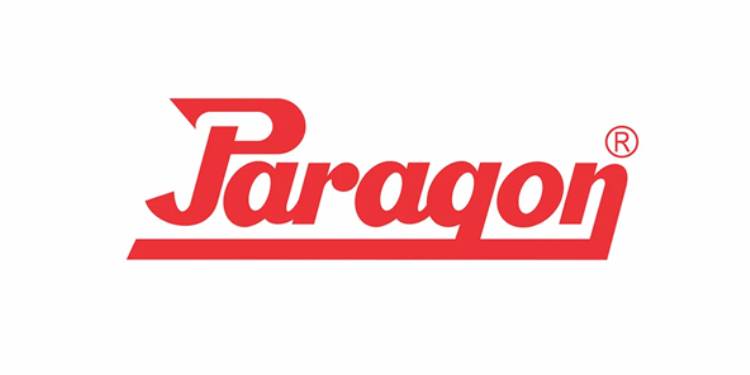
Bengaluru: Paragon Footwear has commemorated its 50th anniversary. With a robust production of 140 million pairs annually and a presence in 19 countries, Paragon continues to shape India’s footwear industry.
Since its inception in 1975, Paragon has transformed from a regional brand producing 1,500 pairs per day into a national leader manufacturing 400,000 pairs daily. The company serves millions of customers annually through its extensive offline and online presence. Its distribution network, comprising over 800 distributors and more than 200,000 multi-brand outlets (MBOs) across India, ensures market penetration across Tier-1, Tier-2, and Tier-3 cities.
Paragon has also been witnessing steady global growth, with exports experiencing double-digit expansion across Asia, the Middle East, and the EU. The company continues to strengthen its international partnerships to increase its global footprint.
Innovation and product diversification have been key to Paragon’s success. The company has expanded beyond traditional rubber footwear, investing in Polyurethane (PU), Polyvinyl Chloride (PVC), Ethylene Vinyl Acetate (EVA), and Thermoplastic Rubber (TPR)-based products cater to diverse consumer needs. Notably, Polyurethane (PU) chappals stand out as the highest revenue contributor, accounting for 45% of total sales, while the iconic Rubber Hawaii line remains a significant growth driver.
As Paragon steps into the future, it is poised to embrace digital transformation. The company has significantly bolstered its digital presence, with online sales in mass brands increasing over the last decade. Investments in technology, including a new POS system, AI-powered recommendations and data-driven marketing, have enhanced customer experiences.
Sustainability is a key focus area. Paragon is investing in waste management and raw material recycling, collaborating with external agencies to meet its Environmental, Social, and Governance (ESG) goals. At the production level, efforts are being directed toward reducing environmental impact and improving eco-friendly manufacturing processes.
As part of its expansion strategy, Paragon places a strong emphasis on hiring and nurturing talent. As the company expands, it continues to invest in its workforce, ensuring they are equipped to meet evolving market demands that align with its growth ambitions.

“As we celebrate 50 years of Paragon, our focus remains on strengthening our partnerships, investing in technology, and expanding our global presence,” said Sachin Joseph, Executive VP – Marketing and IT at Paragon Footwear. “Our growth story is built on the trust of our customers, the dedication of our employees, and our pursuit of innovation. The next phase will be about furthering this vision and making high-quality footwear accessible to even more people worldwide.”
E-Sports
TikTok and OMG are among the latest partners announced
Three months since the unveiling of its agentic platform and Scope3, the latest startup from noted ad tech personality Brian O’Kelley, has unveiled a host of partnerships, including tie-ups with TikTok and Omnicom Media Group, among others. Included in the pre-Cannes Lions raft of announcements is the debut of an agentic AI solution that enables […]

Three months since the unveiling of its agentic platform and Scope3, the latest startup from noted ad tech personality Brian O’Kelley, has unveiled a host of partnerships, including tie-ups with TikTok and Omnicom Media Group, among others.
Included in the pre-Cannes Lions raft of announcements is the debut of an agentic AI solution that enables brands to advertise where their narrative will resonate most, dubbed Brand Stories, plus tie-ups with Butler/Till and iHeart’s Triton Digital.
Scope3 CEO Brian O’Kelley claimed the parcel of partnerships is geared toward using AI to enhance sustainability and omnichannel measurement, with early testing showing brand safety results the company claims are a significant enhancement to legacy ad tech.
“TikTok is now a partner… this was a big [sustainability] RFP that they did last year,” O’Kelley told Digiday. “All of our customers will be able to have access to accurate, always-on, one-click integration with TikTok, so they can have all of their TikTok numbers in the Scope3 platform.”
Similarly, Scope3 is announcing a partnership with Triton Digital, the measurement arm of iHeartMedia, which has expanded its programmatic audio-buying capabilities with the 2024 purchase of Sounder.
Elsewhere, OMG is the launch partner for Scope3’s Brand Stories, an agentic-AI offering that identifies content brands are comfortable with using “human language” to help advertisers better discern suitable environments for placing their ads, a process O’Kelley referred to as “prompt engineering.”
From here, media-buying teams can build fully bespoke targeting segments to engage and influence those audiences. This “calibration process” within Brand Stories contrasts with the use of legacy keyword-blocking systems offered by established players, such as DoubleVerify and Integral Ad Science.
Such tools have led many media buyers to drastically reduce spending on news websites in many cases. Albeit, such players are making moves to ameliorate the impact of advertisers’ predisposition to avoid news content.
Speaking with Digiday before Scope3’s agentic platform announcement in March, Ben Hovaness, chief media officer at OMD Worldwide, explained some of the economic pressures incurred by the buy-side of the industry when keyword blocklists are applied en masse. “It can excessively winnow inventory. … Because most of it is priced through an auction, then you get a supply-demand mechanic. If you cut your inventory pool by 50%, it’s going to boost prices; if you cut it by 80%, it’s going to boost them even more,” he added.
Meanwhile, Scope3 is also showcasing a case study with Butler/Till demonstrating how it deployed Brand Standards – one of the tools Scope3 launched in March – to realize notable performance improvements for the independent agency’s clients.
“We went from 90% suitable to 97% suitable for this pharmaceutical brand,” claimed O’Kelley. Butler/Till has a concentration of pharma and healthcare clients. “We can get them [media buyers] very confident that we can find the majority of news content that they’re comfortable with. So this is a large opportunity to get premium, high-quality content that you weren’t buying before; that’s our that’s our hypothesis for brands.”
https://digiday.com/?p=580394
-

 Professional Sports3 weeks ago
Professional Sports3 weeks agoJon Jones answers UFC retirement speculation as fans accuse champion of 'holding the belt …
-

 NIL2 weeks ago
NIL2 weeks ago2025 NCAA Softball Tournament Bracket: Women’s College World Series bracket, schedule set
-

 Motorsports3 weeks ago
Motorsports3 weeks agoWhy IHOP Rode With Dale Earnhardt Jr. In Amazon NASCAR Debut
-

 Health5 days ago
Health5 days agoOregon track star wages legal battle against trans athlete policy after medal ceremony protest
-

 College Sports1 week ago
College Sports1 week agoIU basketball recruiting
-

 Professional Sports5 days ago
Professional Sports5 days ago'I asked Anderson privately'… UFC legend retells secret sparring session between Jon Jones …
-

 Rec Sports2 weeks ago
Rec Sports2 weeks agoJ.W. Craft: Investing in Community Through Sports
-

 Youtube3 weeks ago
Youtube3 weeks agoAnt greets A-Rod & Barry Bonds before Game 3
-

 Professional Sports6 days ago
Professional Sports6 days agoUFC 316 star storms out of Media Day when asked about bitter feud with Rampage Jackson
-

 Rec Sports2 weeks ago
Rec Sports2 weeks agoScott Barker named to lead CCS basketball • SSentinel.com

























 Stephen A. responds to LeBron’s NBA coverage criticism | First Take
Stephen A. responds to LeBron’s NBA coverage criticism | First Take








